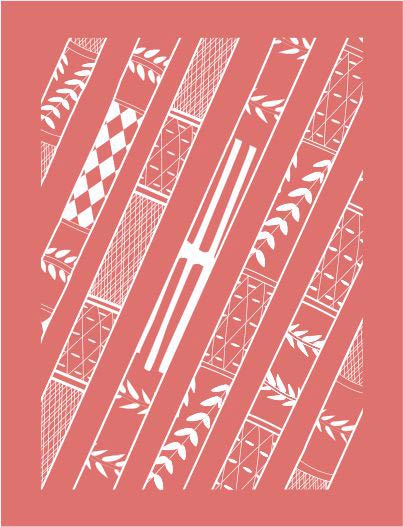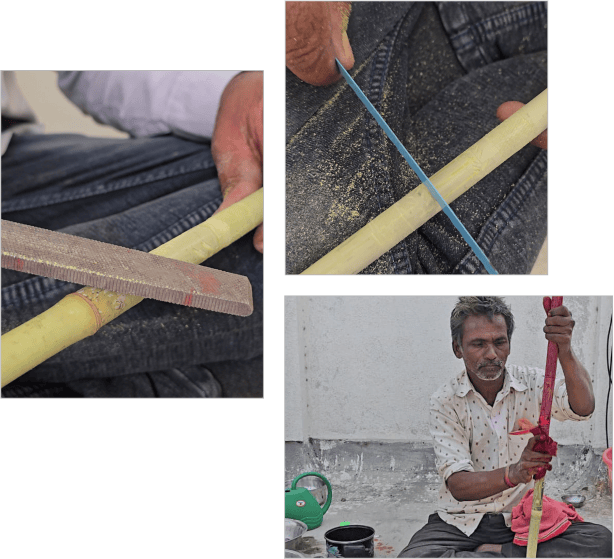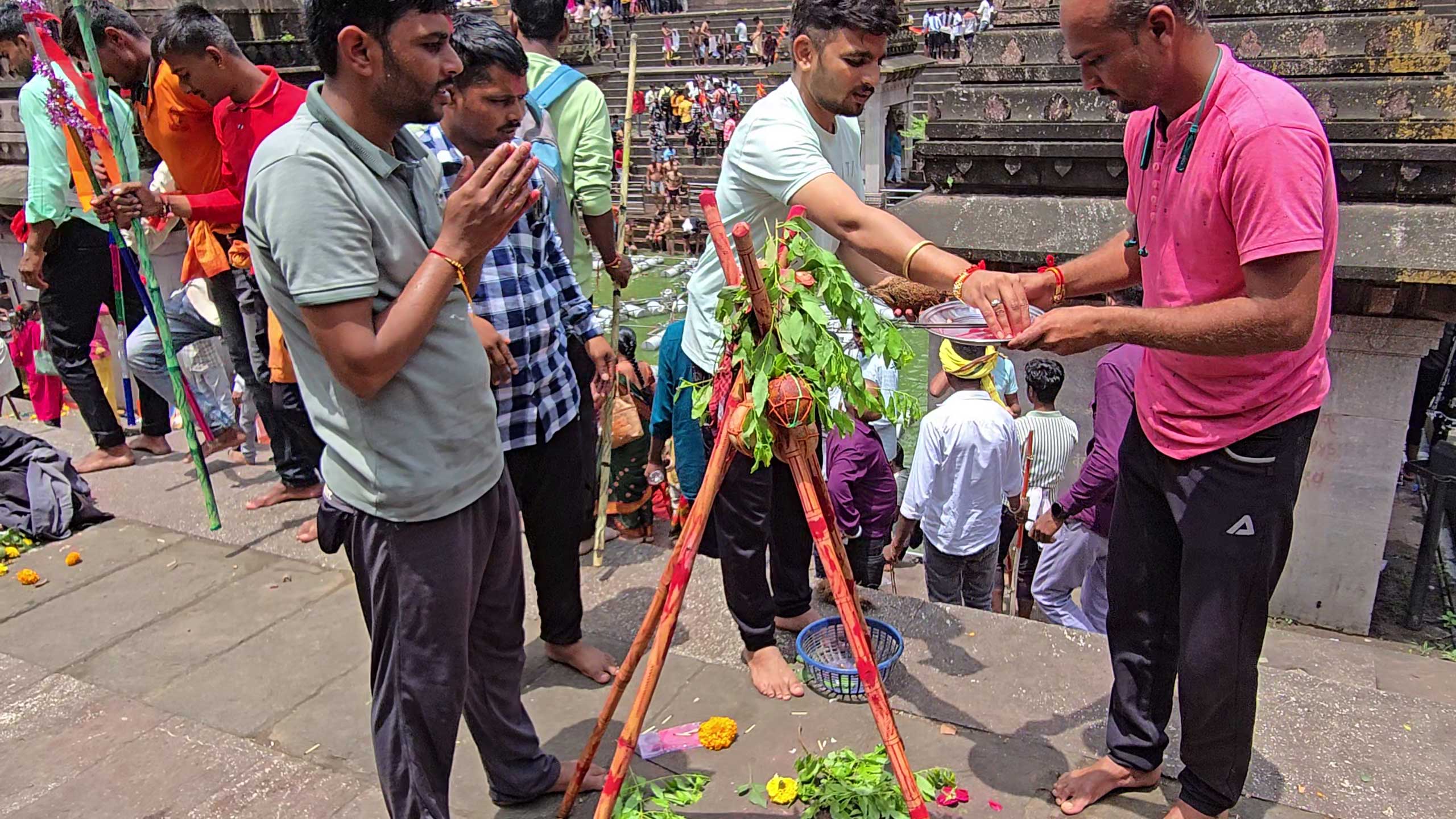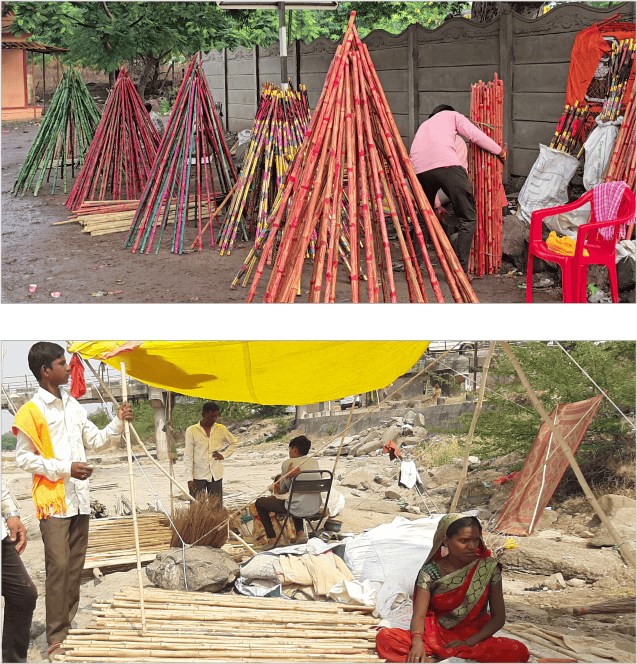Lonje Kathi - A Cultural Heritage
Origin & History
What began as a simple, straightened bamboo
stick carried by locals to the fields for daily
tasks gradually transformed into a remarkable
art form.
Over time, artisans of lonje village began
adorning these sticks with intricate carvings,
turning a utilitarian object into a symbol of
beauty. This evolution not only elevated the
bamboo stick beyond its practical use but also
gave rise to a craft that became the livelihood
of many families in the region.
This intricate bamboo carving craft is found
exclusive in this area.


Uniqueness
Artisans have developed a unique
carving technique using simple
regular tools like haxsaw, knife etc.
They have also developed unique
way of colouring these sticks.
Over 21 plus design patterns have
been developed by artisan
community.

Religious Significance
Religious fairs have long been the
primary marketplace for these
kathis, where their demand is
immense.
The Kathi holds deep significance
specially in the Kawad Yatra, a
religious tradition where devotees
carry holy water in dried bottle
gourds, carefully tied to these
lonje kathis. Nearly 4000 kathis
are sold in a day.
The Economic Sustenance
Traditionally, these kathis serve as simple utility objects, widely used by villagers especially farmers for various tasks in their fields.
However, the true market for these crafted sticks lies in religious yatras and fairs, where they are sold in great numbers.
Interestingly, a few artisan families began offering the sticks spelled with sacred mantras, to ward off wild animals and evil eye. This unique blend of functionality and faith helped the craft’s economic sustenance in a small way.

Know More About


